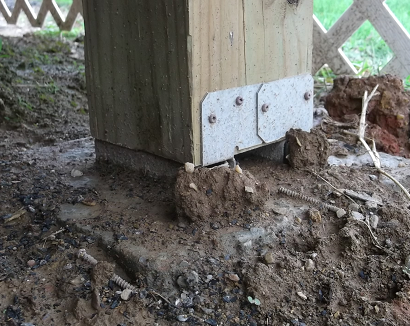Check your deck during safety month in May
Many residential decks aren’t inspected regularly and aging ones can be particularly prone to failures, which can lead to serious injuries and fatalities, according to a top home inspector in Ravenel.
Areas in particular to examine on decks, including:
Support columns:
- Look at the size, number and condition of support columns or piers, starting at the ground. Most modern decks use 4-by-4 and 6-by-6 pressure-treated lumber to secure the deck to the ground. Anything less than 4-by-4 posts probably won’t properly support the deck and occupants.
- Decks should be designed for at least a 40 pound per square foot load.
- Hardware and footings should form a continuous load path into the ground. Wooden support columns or piers can be cemented into the ground or a metal bracket can connect the concrete pier to the bottom of wooden columns. The concrete pier should continue underground below the frost line, typically at least 3 inches.
- Check the wooden columns and joists for excessive cracks or deterioration of the metal hardware used to hold the components together. Wooden support posts on older decks are often installed into the ground without hardware.
- Home downspouts and the grading under the deck should drain away to help minimize the chances of wood rot and insect or rodents being attracted to the area.
Fasteners:
- Many decks are attached to a home; Older decks routinely are only nailed to the home at the ledger board — the part of the deck where floor joists connect to the home’s side — and they often come loose over time. Modern standards require a proper and durable connection between the home and the deck, such as using lag bolts or carriage bolts.
- Improper connections can allow the deck to fall off the home, likely causing injuries to people standing on the deck at the time. If the connection is with nails only, a qualified deck contractor can often add lag or carriage bolts to better secure the deck to the home. Brick or stone veneers aren’t permitted to support a deck, and attaching a deck to a stucco home.
- A very secure connection from the deck to the house would be to install “thru bolts” to secure the deck to the frame of the home.
- An option is a free-standing deck, fastened into the ground adjacent to the home with supports. Flashing isn’t needed and water penetration into the home is much less likely. At the same time, additional structural bracing is required for this type of deck.
- Proper metal hardware is a must to ensure strength and long life to construct structural components such as piers, girders and joists. Proper bolts and screws are preferred over nails. Hot dipped galvanized or stainless hardware should be used.


Recent Comments